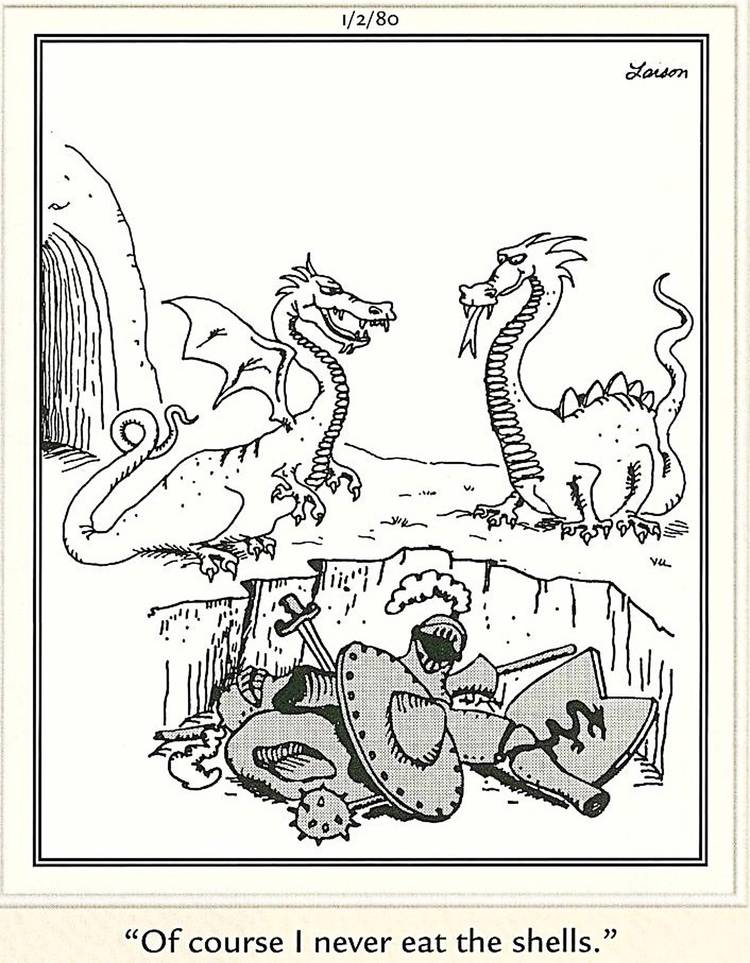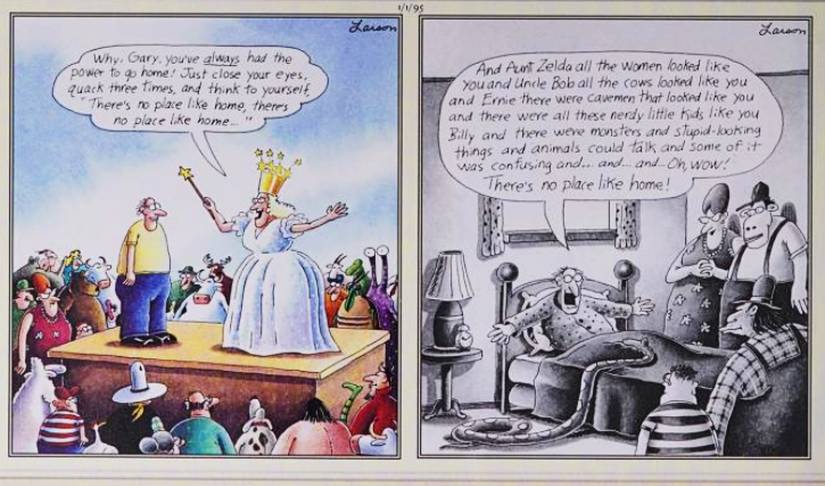At the last minute, The Far Side’s editor suggested making it a more conventional comic strip, featuring recurring characters, a move that would likely have doomed Gary Larson’s career before it even began. Thankfully, Larson was allowed to “do it [his] way,” setting the stage for a legendary career that is still being dissected to this day.
In The Complete Far Side, Larson recounted a meeting he had with the “head honcho” of Chronicle Features Syndicate, the company that sold Far Side and other cartoons to newspapers.
Larson was lectured on the commercial and creative “virtues” of ongoing comic strips, as opposed to his single-panel style, but ultimately, The Far Side was allowed to be what it was.
Before “The Far Side” Even Debuted, Gary Larson Faced Pressure To Make It More Conventional
Gary Larson Recounted A Pivotal Meeting In The Complete Far Side
According to Gary Larson, in late 1979, he had a meeting with Chronicle Features Syndicate boss Stan Arnold, to discuss the comic strip the publisher had just acquired from Larson. At this point, Chronicle had already renamed the strip The Far Side, from its original title Nature’s Way. Eager to please, Larson likely went into the meeting prepared to field further notes.
Still, what Arnold said was the most devastating thing possible. “Stan, studying my meager portfolio, suddenly asked me if I would consider doing a strip. (Comic, not the dance),” Larson recalled, adding that he “was terrified” in that moment. If the artist had played this moment wrong, it could have been a turning point, for the worse, for The Far Side.
In Larson’s account, Stan Arnold went on at length, explaining why comic strips were more marketable, and more profitable, all of which The Far Side creator absorbed in rigid silence. At the end of it all, though, keeping quiet proved to be the right move. When he was done musing, Arnold decided to take a chance on the young artist anyway. “Let’s just go ahead and do it your way,” he said.
If Gary Larson Had Made “The Far Side” A Traditional Strip, It Would Have Lost What Made It Unique
The Far Side Might Have Been Sabatoged Before It Started
Writing about this 1979 meeting almost twenty-five years later, Gary Larson explained he wasn’t opposed to comic strips, but rather the opposite. He didn’t feel like he had what it took to write one long-term. As the author/artist put it:
Truth is, I’ve always been sort of in awe of comic strips. I used to think, How do those guys do it? As a kid, I always had a fondness for Alley Oop, and later on I consistently enjoyed the work of a couple of my contemporaries, Bill Watterson (Calvin and Hobbes) and Berkeley Breathed (Bloom County). But I could never get inside the heads of strip cartoonists. Even the ones I liked. Clearly, I was wired differently.
However, with his career on the line, how was a young Gary Larson supposed to explain this to publisher Stan Arnold?
“I wasn’t even Gary Larson,” at the time, he wrote in The Complete Far Side. “I was just an eager-to-please lump of self-doubt sitting in some editor’s office.” In other words, if Arnold had pressed the issue, it’s entirely possible Larson might have caved to the pressure and tried to make The Far Side a “regular” comic strip.
How that experiment would’ve turned out is, of course, a matter of speculation. However, it is fair to propose that the chances of success for The Far Side would have dropped dramatically, because Gary Larson would not have been creatively true to himself, meaning he might not have produced unique, immediately recognizable work.
“The Far Side” Was The Opposite Of “Peanuts,” Which Helped Solidify It As A Hit
The Far Side Proved Readers Liked Strange Humor
Of course, when recounting how Stan Arnold briefly tried to convince him to do The Far Side as a strip, Gary Larson used Peanuts‘ Charlie Brown as the prototypical example. Larson wrote of his encounter with the editor:
“People like to see characters they recognize,” [Arnold] said. It’s the old familiarity-breeds-fondness thing. Strips engage readers in a more intimate way, like an old friend that comes to visit every day or so. And that leads to reader loyalty. Single-panel cartoons are like strangers that show up on your doorstep. No one flings open their door for strangers. However, if you look out and see good ol’ Charlie Brown, it’s like, why, sure, open the door! C’mon in Charlie!…Hey, wait! Quick!…Shut the door! There’s a damn cow out there!
As Larson described it, he sat there wondering how to tell the publisher he “was not going to be good at developing a strip.”
Over the next fifteen years, The Far Side would prove this logic to be faulty, by developing a die-hard base of readers who gladly welcome Larson’s cows, chickens, cowboys, and more into their homes. Even as, in the creator’s words, his “ever-changing characters got crunched, speared, shot, beheaded, eaten, stuffed, poisoned, and run over about twice a week.”
Larson’s sense of humor was expressly geared toward standalone jokes, utilizing single panels. Over time, his style was validated by success, but before that, it could have proven too much of a gamble for its publisher, and for newspapers around the country. So, while Gary Larson believed in The Far Side, many other people had to believe in it too.
Gary Larson Mastered The Form Of The Comic Strip, But He Did It His Own Way
The Far Side’s Humor Needed Room To Breathe
Being forced to write a strip could have derailed Gary Larson’s career, had his meeting with Stan Arnold about The Far Side gone differently. However, it is worth noting that while The Far Side didn’t feature a recurring cast, but instead used recurring character archetypes, Larson did prove capable of utilizing the strip as a comedic form, when it suited him.
In fact, many classic Far Side comics broke the single-panel, one-image mold. In essence, this highlights how the restriction of writing a strip that Larson balked at wasn’t a matter of form, but instead, was about content. A static cast would have limited The Far Side’s range, the ability to go anywhere and do anything for the sake of the bit.
The Far Side came to epitomize the opposite of Stan Arnold’s “familiarity-breeds-fondness” argument. While Peanuts, or Garfield, could never deliver something truly unexpected, that became Gary Larson’s modus operandi with The Far Side, which is why his work continues to be a source of endless fascination even decades after he retired.
This story originally appeared on Screenrant




